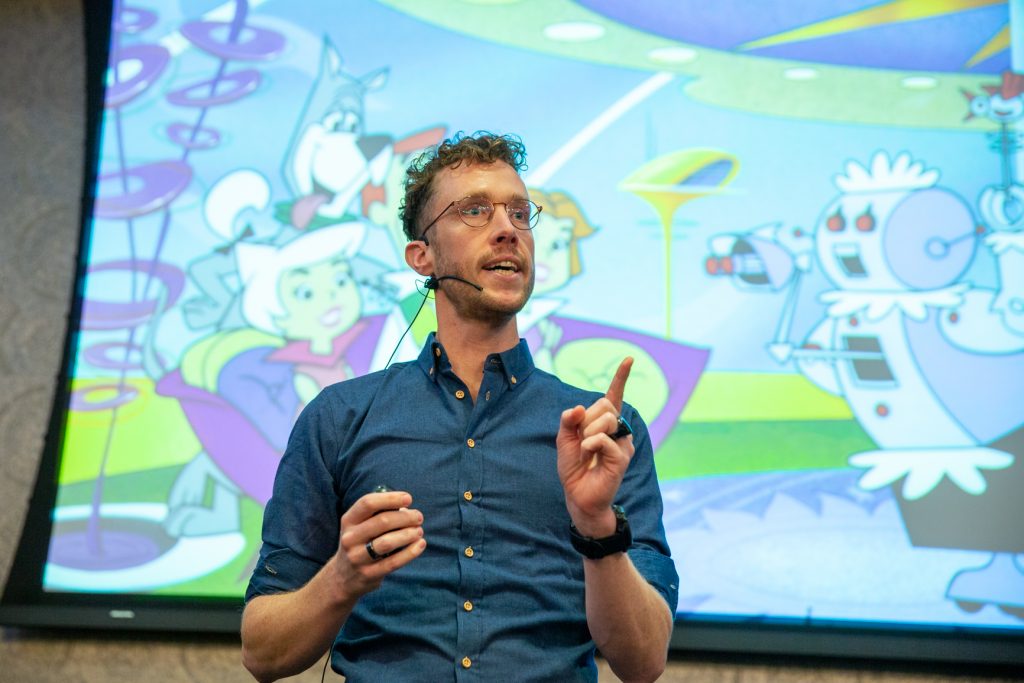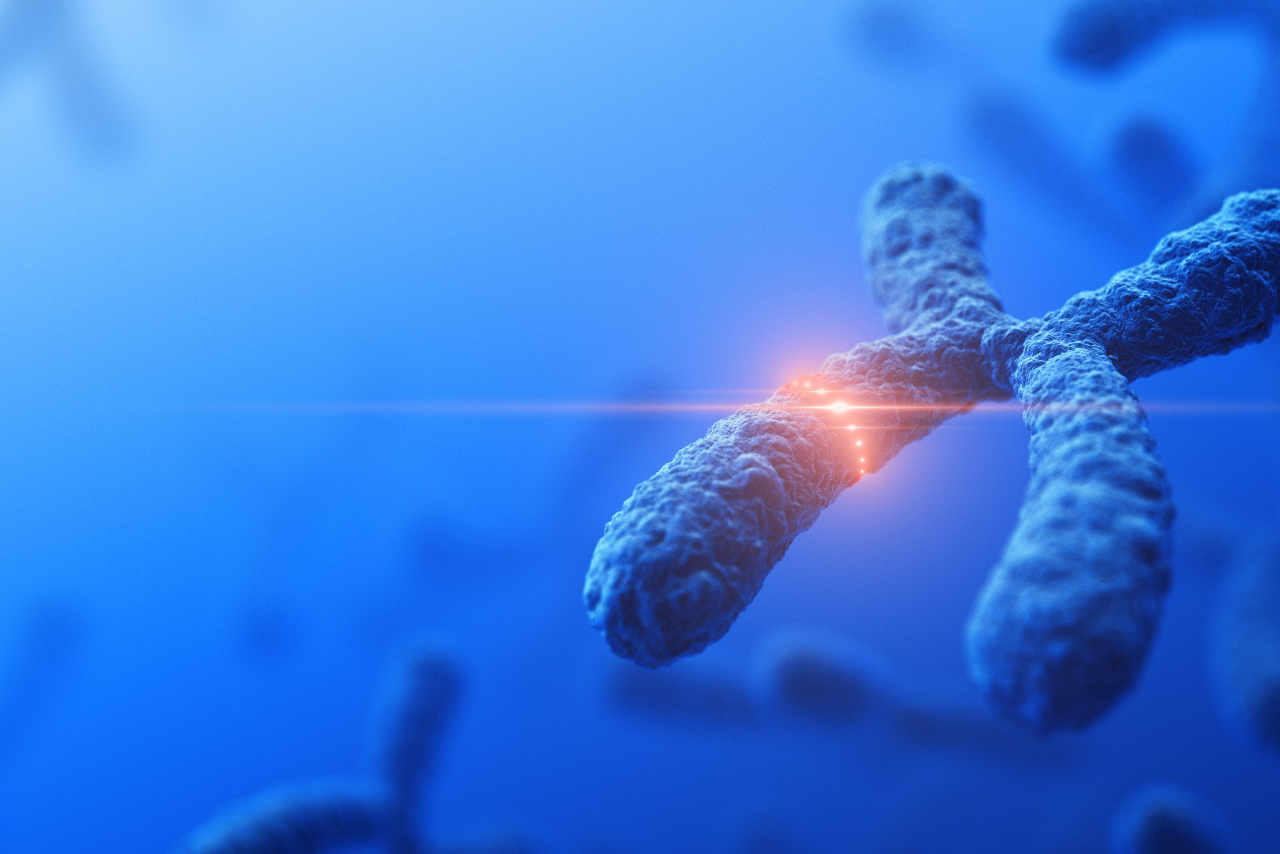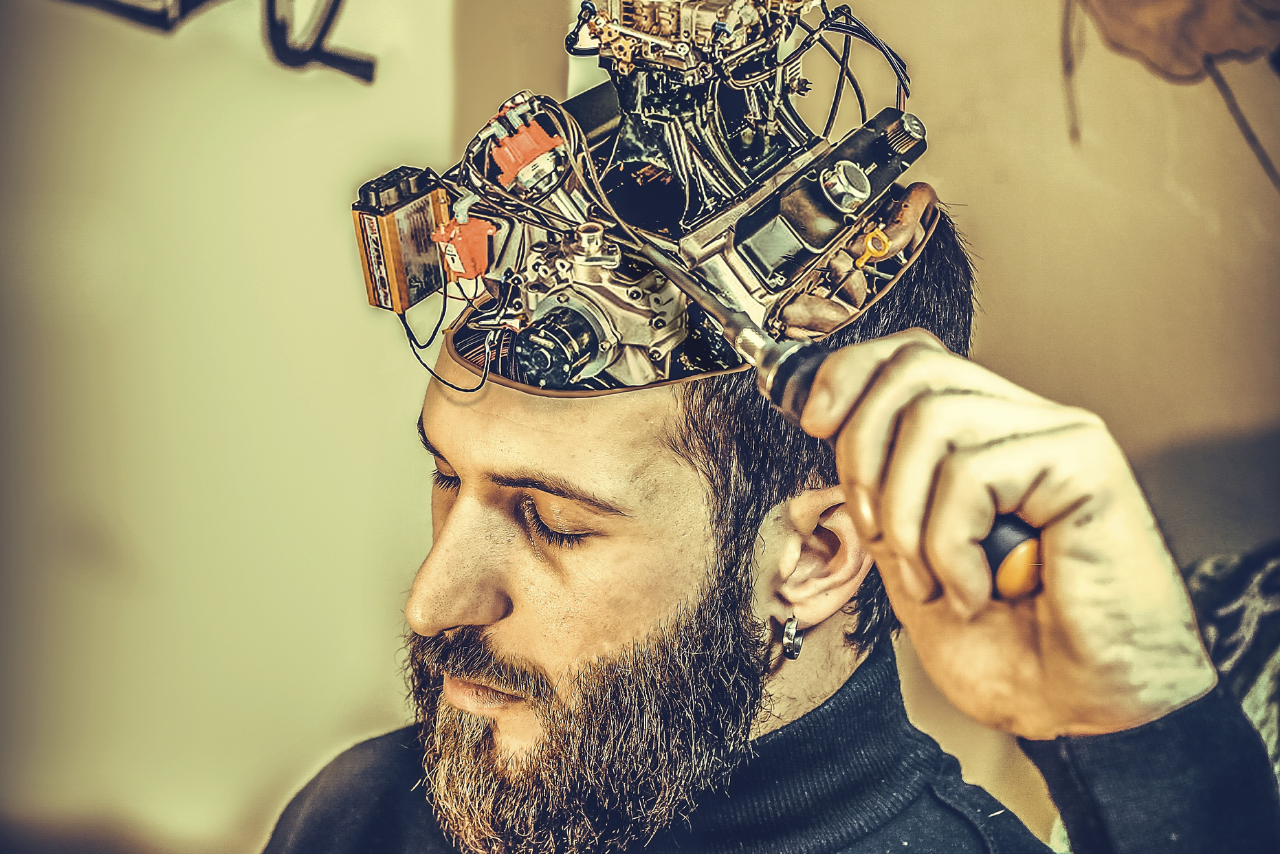Genetic manipulation and modification in humans. What is the CRISPR/Cas9 technology about? How does it work? What are the pros and cons? What are the examples of where it is already happening? What are the consequences? I will explain all of this in this article.
How does CRISPR/Cas9?
CRISPR means Clustered Regularly Interspaced Short Palindromic Repeats. Together with the enzyme Cas9, scientists can use this technology to process DNA very accurately. This is a form of genetic modification.
The terms genetic modification and manipulation are both used and have the same meaning. Yet manipulation has a more negative connection then modification. I will use both terms throughout the rest of this article.
Can we change the human body by changing our DNA? What about the storage of the data in DNA? What is already happening? Can you do it yourself? What can we do with it in the future? Which political, legal and ethical issues does this raise?
By the way, this is also a relevant article if you are interested in this topic: human genetic enhancement 🧬
Genetic modification
After reading this article you will know what genetic modification (or manipulation) is, what the possible impact is on plants, animals and humans, and how CRISPR/Cas9 works.
Below is a summary of the most important points.
#1 CRISPR/Cas9 is not the first technique to modify DNA. Compared to its predecessors, it is faster, cheaper and more efficient.
#2 Genetics and genetic modification have been used in healthcare for some time. From detecting genetic disorders to strengthening immune cells to treat leukemia.
#3 The first children are born who have been genetically modified as embryos with CRISPR/Cas9. This has sparked a global outcry from biotechnologists, bioethicists and politicians.
#4 There are biohackers who are trying CRISPR/Cas9 on their own, with the goal of making their own antibodies against HIV or for more muscle growth.
#5 In Europe the application of CRISPR/Cas9 is limited. But in addition to legislation, there are even more difficult choices for governments, including where and when you allow this technology.
In the rest of this article, these points will be discussed, with substantiation and other insights.
Change DNA
In this article you will learn everything about modifying DNA. Since this covers so many aspects, I’ve broken up the article:
- Part 1: the discovery of CRISPR/Cas9;
- Part 2: how CRISPR/Cas9 works;
- Part 3: possibilities of genetic manipulation;
- Part 4: designer babies;
- Part 5: advances in genetics;
- Part 6: do-it-yourself genetic modification;
- Part 7: challenges and disadvantages;
- Part 8: opportunities;
- Part 9: legislation and policy;
Throughout the article you will find the following examples:
- Lulu and Nana
- Josiah Zayner
- Triston Roberts
- Aaron Traywick
- Brian Hanley
In the part about designer babies you can read more about Lulu and Nana (example 1). The other examples are in the part about DIY.
Finally, you can find my conclusion, more how you can hire me and consult the reading list of all the resources I used in this article.
Video: explanation genetic engineering humans
I made a video about genetic modification in humans. Take a look at the video below, or visit my YouTube-channel.
I made a video about genetic engineering in humans: what are the 3 best documentaries? Take a look at the video below, or visit my YouTube-channel.
In this part I will write about the discovery of CRISPR/Cas9.
Discovery CRISPR/Cas9
During spring of 2011, researchers Jennifer Doudna and bacteriologist Emmanuele Charpentier met at a congress about microbiology in Puerto Rico. It is said that they walked through the city of San Juan between the lectures.
Charpentier told Doudna about her research on the immune system of the bacteria. Bacteria have to protect themselves against viruses. Viruses have developed genetic mechanisms to invaded and destroy bacteria.
A few years ago, two French researchers of the Danish food manufacturer Danisco (Philippe Horvath and Rodolph Barrangou) discovered one of the protective mechanisms of bacteria. They researched bacteria that could help make cheese and yoghurt.
A number of these strains of bacteria, they discovered, were able to specifically eliminate part of the virus’ DNA. This defence system also knew which viruses were likely to attack and could then destroy a specific part of the virus’ DNA.
Dutch researchers
In 2008 John van der Oost conducted research at Wageningen University into the CRISPR mechanism in bacteria. I interviewed him in Dutch for my podcast.
Van der Oost discovered it earlier when he was researching a microbe from a volcanic source in Yellowstone Park in Northwest America around 2000. Van der Oost and colleagues in his research group saw a pattern: the genetic letters had the same order from left to right as the other way around. They were palindromes.
It was a funny phenomenon, but we had no idea of the biological relevance
Professor John van der Oost
The Dutch researcher Ruud Jansen coined the term Clustered Regularly Interspaced Short Palindromic Repeats in 2002. In an article in De Groene Amsterdammer, van der Oost indicates that he did not immediately see the impact. ‘It was a funny phenomenon, but we had no idea of the biological relevance.’
Classes CRISPR
Later Doudna and Charpentier continued to work on, among other things, the ideas of van der Oost. Namely, there are two classes of CRISPR systems. The class-1 was launched in 2008 by van der Oost and his group. This system is more complicated than the class-2, discovered by an American research group around 2012.
The name of class-2? That is the cas-9-system. According to van der Oost, this is a relatively simple system and easy to introduce into cells of animals and plants. In the interview I ask John van der Oost whether this could have been discovered by the group in Wageningen.
He doesn’t think so. It was a combination of more resources, building on scientific research and luck that led to the discovery by Doudna and Charpentier.
Challenges CRISPR
Incidentally, there are still some snags to the use of CRISPR/Cas9. In the interview John van der Oost indicates hat the most risky part is not cutting the DNA, but repairing the fracture. ‘If this is not done seamlessly, it can lead to unwanted changes in the DNA. That is a risk we have to manage before we can safely apply the technology.’ In addition, it appears that the CRISPR system cannot cut everywhere.
Scientist around the world are working to solve these problems. For example, John van der Oost explains that the Cas9 protein is being modified considerably to function better and other research groups are conduction experiments with Cas12. It seems to cut more accurately than even the modified Cas9 proteins.
In this part I write about how CRISPR/Cas9 works
Workings CRISPR/Cas9
The immune system of bacteria consists of two parts. The first part is the ‘searcher’. This is RNA in the bacteria’s genome, which is a mirror image of the virus’ DNA. In the book The Gene, Siddhartha Mukherjee writes that it is like always walking around with a passport photo of your worst enemy [link at the bottom]. Once the DNA of the attacking virus is recognized, the bacterial protein Cas9 is released. That is the ‘destroyer’.
The searcher works this way: Doudna: ‘The molecular machine wraps tightly around the DNA, like a python around the body of a gazelle. Cascade acts as GPS coordinates that indicate exactly which of the viral DNA needs to be destroyed.’
Viewfinder and substitute
Doudna was fascinated by this principle of the ‘searcher’ and ‘destroyer’ when she read about it. She specialized in research into the effect of RNA. In the beginning she thought it was especially strange. In fact, she seems to have said that ‘this was the most obscure thing she’s ever worked on’.
Together with Charpentier she went deeper into the functioning of the bacterial immune system. In 2012 they found out that the system is programmable. They could customize the ‘searcher’ and ‘destroyer’. This made it not only suitable for bacteria and viruses, but you could also apply it to other animals, plants and perhaps human as well. At first they tried the protein Cas3 (just like van der Oost), but in the end Cas9 turned out to be the most manageable and useful.
We actually use an evolutionary mechanism to adjust evolution.
Emmanuelle Charpentier
The combination was brilliant: ‘This was the perfect bacterial weapon: a virus-seeking missile that could strick quickly and with incredible precision.’ Charpentier herself sees the paradox of this: ‘We actually use an evolutionary mechanism to adjust evolution.’
Genetic editing
What happens when DNA is being attacked and destroyed? The two ends of the remaining DNA come loose and are trimmed. Genes are arranged in such a way that they want to repair themselves. They usually make a copy of a similar gene in the cell for this purpose.
What if the cell is flooded with other DNA? Then there is a very good chance that the damaged gene copies the information to one of these genes. It’s like erasing a word in the sentence and write a new word in its place.
This technique is also called ‘genome editing’ of ‘genome surgery’. Doudna and Charpentier published their research in Science in 2012 [link at the bottom]. The publication hit like a bomb. In the following years the application of this technique grew explosively. It still has some limitations, but CRISPR/Cas9 was significantly easier, more powerful and more efficient to edit genes than other techniques previously available. In 2020 they recieved the Nobel price in Chemistry for their work.
Drastic influence
However, there are still many things that need to be further investigated and developed, such as the use of CRISPR to change the transcription from DNA to RNA or by editing the epigenome. The epigenome is everything outside of the DNA, but is does affect transcription. This fits the field of epigenetics.
We are entering the golden age of genetic engineering
Despite this, scientists are lyrical about the possibilities. The speak of the ‘golden age of genetic engineering’. This technique and it’s even better successors are likely to have a drastic impact on all kinds of areas of healthcare, pharmacy, environmental conservation, food production, education, government and society.
Potency
What is the potential of CRISPR/Cas9? Jennifer Doudna herself says in her book A Crack in Creation: ‘CRISPR has incredible potential to make the world a better place. Imagine that you can genetically eradicate the most serious hereditary diseases, as well as vaccinations that ended smallpox and soon also polio. Imagine thousands of researchers use CRISPR to investigate the scourge of cancer and find new treatments or even cure it. And imagine that farmers and growers can solve the food crisis by making their crops more resistant to the changing climate with CRISPR. These scenarios may be within reach, depending on the choices we make in the coming years.’
CRISPR had incredible potential to make the world a better place
Jennifer Doudna
In an article in Vox, a group of scientists was asked which applications they are most excited about. Examples cited include improving crops to meet growing food demand, developing new therapies for cancer and Alzheimer’s, developing alternatives to petrochemicals (by making plastics from modified plants) and viruses such as HIV, herpes and Eradicate malaria.
How fast will it go then? John van der Oost thinks it is getting safer: ‘You can apply this within five to a maximum of ten years [that will be around 2023 to 2028]. Then it is also affordable, so not only for the rich people who can have their genome modified.’ He adds a small comment in an interview ’At least, I hope it works that way.’
This part is about the possibilities of genetic engineering, including in healthcare.
Genetic manipulation
According to some experts, this is the age of biology. In this century we as humans are going to control living tissues. Think of limbs that automatically grow back, organs that are grown in a laboratory, bacteria that heal us and viruses that can repair our DNA.
That is genetic modification, tinkering with our DNA. The DNA that is the ‘operating system’ of our body, other animals and plants. In short, everything that lives on earth.
The basis for this is genetics (in English ‘genomics’), the study of genomes. A genome is a set of genes from a cell or an organism. That is quite complex, just check. The human body (including yours) consists of approximately 37 trillion cells. Each nucleus contains DNA, which is divided over 46 chromosomes. In total you have approximately between 21,000 and 23,000 genes.
Genes change
It is great that we know more and more about our DNA. But as soon as you know how things work, we as humans also have the tendency to intervene: hacking. That is not surprising. A living cell looks quite like a computer.
You can see it like this. The operating system of a cell is the A-C and G-T pairs. If you know the order, you can break into your cell and make changes. Does this still sound very futuristic now? No, for example: the price of analyzing your entire DNA set has dropped spectacularly in just a few years.
Ten years ago it would cost $10 million, today it can be for $1,000 or less. Visionaries say this technology is going to be a new kind of internet. Think of cars that recognize you based on DNA. But also think of bioterrorism, or Facebook that will link your DNA with your behaviour on the social media platform.
Healthcare
The promise of CRISPR/Cas9 is that we can permanently remedy hereditary conditions. Not only for one individual, but also for subsequent generations. This certainly applies in the short term to disorders related to one gene, such as Huntington’s disease, sickle cell anaemia and cystic fibrosis. Diseases involving multiple genes are much more complicated to combat.
Changing DNA, with that we as humanity play god: artificial selection instead of natural selection. In a sense, we are already doing this, for example through changes in our lifestyle. A good example is a study in Great Britain [link at the bottom]. A large genetic study with 150,000 sets showed that in the last 50 years there has been an increase in the alleles on the gene that is related to nicotine addiction.
Are we playing god?
People of this genotype are more than average prone to start smoking and die younger because of a smoking-related disease. But the social view on smoking has also changed considerably in the past 50 years. This has influenced the (natural) selection, as a result of which this genotype has increased in one or two generations in the population. There is a chance that this will change again within a considerable time, now that smoking is becoming less and less popular.
The difference is that we can now directly modify the genes with CRISPR/Cas9. That is a lot more radical and far-reaching. The caveat here, however, is that the time frame from which efficacy is demonstrated during a laboratory experiment to an actual therapy for patients is very long. This can take anywhere from 10 to 15 years.
Gene therapy
Some genes have a direct impact on certain syndromes. Gene therapy has been done for years, but with CRISPR/Cas9 this can be done faster, easier and more effectively. In March 2017, it became known that researchers in France had successfully treated a teenager with CRISPR gene therapy for sickle cell disease. According to experts, this is ‘a milestone’ and ‘very promising’.
In the United States, the FDA (the Food and Drugs Authority) approved gene therapy for childhood leukemia. Under the name CAR-T, the immune cells of the patients are modified in such a way that they start fighting the disease. In an article in Wired magazine, Alex Marson, biologist and physician at UC San Francisco, talks about a similar method: ‘To respond to certain antigen, which is common in certain cancer cells. That way, the T cells only attack the cells that give off that signal.’ [Link at the bottom]
Somatic gene therapy
This is the most likely form of gene therapy: somatic. This means that cells are removed from the body, modified in a lab and then reinserted. This is different from changes in the germ cells. If you make changes to it, it will be passed on to the next generations.
If you make a one-time change that then carries over to subsequent generations, this is called ‘gene drive’. For example, there is talk of changing the genes of certain mosquitoes, so that those mosquitoes cannot transmit malaria to humans. Another example is the American island of ‘Martha’s Vineyard’. There, scientists plan to genetically modify the mice so that they can no longer transmit Lyme to ticks [link at the bottom].
Designer babies
In 2017 a publication was published in Nature by a group of researchers led by Shoukhrat Mitalipov [link at the bottom]. They have applied genetic engineering to 58 embryos. The goal was to alter a gene related to fatal heart disease. According to the researchers, the procedure was successful in 48 of the 58 embryos.
It is not yet possible to test this, because it is not (yet) allowed to grow these genetically modified embryos into humans. As you will read below, that hasn’t stopped some scientists from trying this.
Designed Child (2009)
They weren’t the first, by the way. Already in 2009, the first child was born that was ‘designed’. The child’s father had seen most of the women in his family die from various cancers originating from mutations in the BRCA-1 gene.
The father and his wife had asked for permission for in-vitro fertilization and screening of the fertilized eggs. Of the examined eggs, the doctors chose one without a BRCA-1 mutation. This means that from the next generation this mutation could no longer occur in that family.
A great uproar broke out in the media. According to experts, medical science is moving on a slippery slope with this. After all, if we are still going to filter out defects through genetic selection, are we going to select for positive characteristics such as muscle strength and intelligence? Will we get designer babies?
First CRISPR baby (2018)
At the end of November 2018, the Chinese doctor Jiankui He was in the news. Using the CRISPR/Cas9 method, he removed the gene from embryos that makes humans susceptible to the HIV virus. He did not do this on his own, but at the request of the parents. Those modified embryos grew into babies named Lulu and Nana.
He himself had expected to be welcomed as a hero, but his colleagues did not have a good word for it. A few responses: ‘Far too risky, irresponsible, monstrous’.
Way too risky, irresponsible, monstrous
Scientists after birth Lulu and Nana
Still, it is strange, because He’s intervention is on a list of 10 simple genetic modifications compiled by George Church [link at the bottom]. It involves changing the CCR5 gene, so that one child of the twins can no longer get HIV.
Treatments
Molecular geneticist Hans Clevers (Utrecht University) is not surprised, however. He said in a response in de Volkskrant: ‘I think that sooner or later this will be offered as treatment in countries like Ukraine or Brazil, because the procedure is so simple.’
The hardest part is determining what is or is not a condition and whether you want to intervene. A study by the Amsterdam UMC showed that two thirds of the respondents wanted a genetic modification of their embryos when it comes to hereditary conditions such as cystic fibrosis, metabolic disease or HIV (provided it is safe).
Watch He’s video below:
Book by Eben Kirksey
In 2020 Eben Kirksey released the book The Mutant Project. In this book he describes the background and working method of Jianku He. Watch the video below or on my YouTube channel.
Opinion of the Dutch
How do the Dutch stand in this? In 2016 researchers conducted research into genetic modification of the body and the unborn embryo. These were the most striking results:
- 85.2% is for changing a genetic abnormality in their own body;
- 65.7% would modify a child’s embryo if they themselves had a hereditary genetic defect;
- 29.6% would modify a child’s embryo if they were healthy themselves;
- 15.2% would modify a child’s embryo to make it smarter, for example more intelligence.
The discussion on this theme will continue to grow in the coming months and years. Broadly speaking, you could say that there are two camps. A group of parents wants to give their children the very best starting position and a group of parents feel that they do not have the right to decide this for their child.
[MEET-UP] In November 2015 I organized a meet-up about genetic modification. While the technology is evolving rapidly, the information shared during the meet-up is still relevant.
Advances in genetics
Terry Vrijenhoek was the guest speaker at the meet-up. He is a staff advisor at the Genetics Department of the University Medical Center in Utrecht. In 2011 he obtained his PhD for research into the genetic background of schizophrenia. Using advanced DNA chips, he searched for genetic differences between patients with schizophrenia and healthy people.
For the meet-up, Terry and I ate something in a restaurant. As we walked to the venue, we talked about the future of genetics.
Society decision
Terry: ‘What you wrote on your blog in your preview tonight, that could all be done later. But what do we as a society want and find acceptable, where companies can earn money and what happens every day in the practice of doctors and medical specialists? All of this ultimately determines how quickly, or how slowly and in what form this technology develops.’
The tone has been set. How quickly we will apply genetic engineering to humans does not depend on the technology – it already exists – but mainly on what we want to apply as a society.
Anyway, who would have thought that genetic researchers would be boring? Terry wears red sneakers, matching his red shirt, and talks about his DIY home in the center of Rotterdam while eating. He talks enthusiastically about DNA, Shakespeare and the minions.
Developments according to Terry Vrijenhoek
DNA in itself is not determinative. Lifestyle choices and a degree of randomness ultimately determine whether certain switches in your body turn on or off. This complexity immediately leads to a discussion among those present. Are medical specialists still needed in the future? What if everyone has their entire DNA analysed and we then have artificial intelligence calculate smart algorithms on it?
Terry doesn’t believe in that. There are so many other factors of influence. You cannot yet distinguish a straight line from cause to effect on the basis of data. You certainly still need the experience and knowledge of medical specialists.
What are other developments in this area?
- Self-testing
- Human Genome Project
- Costs
- Storage of data in DNA
I have further elaborated on the developments below.
Self-tests
In 2013 actress Angelina Jolie was in the news in relation to the BRCA-1 mutation [link below]. She had had a genetic test, which showed that she had an increased risk of breast cancer. Incidentally, she had done this because her mother also had breast cancer. Based on the results of the test, she has decided to have both breasts amputated.
She did it because of health risk, but commercial tests are also available. I myself have done a DNA test from 23andme. Terry was one of the first to participate when 23andme started marketing DNA self-tests in 2009.
What I especially find the added value of 23andme is that they keep a close eye on scientific developments. Especially at the beginning, I saw my top 5 disease risk change every time. That’s because they change their algorithms based on the latest scientific literature.
Reservation
Terry did have a reservation about such tests, because they do not analyse your entire DNA. They are also not allowed to analyse everything. They base their insights on associated populations and are not allowed to look at genes that have causal mutations with certain pathologies. People who arrive at the hospital with their DNA dataset therefore simply have to go through the regular process.
However, the studies that universities and hospitals themselves conduct into the link between DNA and diseases are also difficult. This is because researchers are not yet sure whether the healthy people in the control group are really healthy and are not sure whether the clinical picture that the doctor attributed to the patients is correct. The more we learn about DNA, including with self-tests, the better we can define syndromes and health.
Human Genome Project
Another example showing the increasing interest is the Human Genome Project. When this was started in 1988, it seemed like a utopia to fully map the structure of the human genome. However, the technology moved so fast that it was ready well before the deadline. Now analysing a complete human genome costs less than $ 1.000.
Terry also mentions Michael Snyder. This molecular geneticist from Stanford University has studied himself as a subject for study for 2 years. They called this the ‘integrative personal ommics profile’ (iPOP) in an article in Nature. In addition to his genetics (genomics), he has also mapped his metabolic processes (metabolomics) and protein processes (proteomics).
Were they spectacular results?
Well no. According to Terry, Michael and his assistants could see the flu coming twice in the data afterwards. That doesn’t sound very exciting yet. But what if we can properly analyse much more data with more knowledge about genetics combined with artificial intelligence?
Costs
The equipment at UMC Utrecht analyses 30 times the 3 billion DNA base pairs (the combination of the A-C and G-T pairs) when reading the DNA. She also does this 30 times to reduce the chance of errors. Terry also shows the Minion. You can plug this device into the USB connection of your laptop. The device itself is free, but the cartridge that you have to use per test now costs (still) 1.250 euros. This is expected to become cheaper.
In addition, you cannot spit in it to analyse your DNA, but some preparations still need to be made on your DNA. However, it does go fast. Terry: ‘This device has 90% reliability. That may not seem like much, but it was only 50% a year ago.’
This is just about analysing. What if you can change your genes yourself at home? Read below under ‘Do-it-yourself’ about people who have done this.
Storage of data in DNA
At the Biohacker Summit 2016 in Helsinki, I heard a presentation from Nell Watson about the storage of information in DNA. DNA is an interesting way of storing information. You can keep it for thousands of years, it can withstand extreme cold and heat and you can make millions of copies per hour.
Is this a game changer? Absolutely.
An example. A single ladybug contains 30 terabytes of information about DNA. In other words, a ladybug fits just as much information as 6383 DVDs. That saves even more closet space!
Researchers led by Ewan Briney (a leader in bioinformatics) have taken the first step. They managed to program 154 Shakespeare sonnets, a scientific article and a photo (JPEG) into DNA, to send them to another lab and have them read there.
Because of my interest as a biohacker, I am curious if there are already people who have applied CRISPR/Cas9 on themselves, what possible disadvantages and opportunities are and what the impact of this development could be.
Do-it-yourself CRISPR/Cas9
The start-up The Odin itself releases CRISPR/Cas9 sets that you can experiment with. In spring 2019 I myself worked with CRISPR/Cas9 during a workshop of De Waag in Amsterdam. During this workshop we adjusted the DNA of a bacterium, after which it started to glow in the dark.
You can also apply this to yourself. The owner of The Odin is the eccentric biochemist Josiah Zayner. He injected himself with modified cells to become more muscular [link at the bottom]. He had modified his own DNA by removing the gene for myostatin. Without myostatin the muscles keep growing, as is naturally the case with double-butted cows and Texel sheep.
I injected myself with modified genes for more muscle growth
Josiah Zayner
He was not interested in demonstrating the efficacy: ‘That has been demonstrated for a long time’. His main goal was to take the stigma off this development: ‘Discussions about gene editing are often about possibilities, but I want to show what is really does’.
Tristan Roberts
A couple of weeks after Josiah Zayner’s stunt, Tristan Roberts caused a sensation by giving himself gene therapy live in a Facebook video. He is infected with the HIV virus, but has stopped taking virus inhibitors because of the side effects.
The intent of his ‘do-it-yourself’ gene therapy is to make his body produce the antibody N6. N6 is discovered a few years ago in a rare group of people who are resistant to HIV. Roberts gene therapy is made by Ascendence Biomedical [link at the bottom].
In November 2018 I interviewed Tristan about his experiment, the impact on healthcare, the pharmaceutical industry, the dangers and ethical dilemmas. Watch the interview below (of on my English YouTube channel).
Brian Hanley
Brian Hanley came in the news earlier [link at the bottom]. He is microbiologist and founder of the company Butterfly Sciences. This company works on genetic modification as method to improving the health of AIDS patients. Ultimately, the company wants to use genetic modification against aging.
After investors in the company were not very enthusiastic, Hanley decided to do the first test on himself. ‘I wanted to proof that it worked. That is the only way to make progress.’ A couple of weeks later they took a blood test from him. Researchers saw an elevated level of the hormone GNRH (which, according to the hypothesis, should show that the intervention was successful), although they warned that they would not jump into conclusions.
Aaron Traywick
In May 2018, a couple months after the actions of Zayner and Roberts, Aaron Traywick hit the headlines. He was the founder of the aforementioned Ascendance Biomedical. He died at the age of 28 after a personal experiment that went wrong. Incidentally, this had nothing to do with genetic modification. He had taken the drug ketamine and lay in a floating tank.
This is also the warming given by Hidde Haisma, professor of pharmaceutical gene modulation at the University of Groningen. He advises against anyone to tinker with his of her genes, with or without help. He is sceptical about the experiments of Roberts and Zayner: ‘The injected DNA must go to the cell nucleus to have any real effect’.
The question is whether that really happens. Great results have not been achieved with Robers and Zayner so far.
What are the challenges and drawbacks of genetic modification?
Disadvantages (3x)
What are the possible drawbacks of genetic modification? Jennifer Doudna herself also asks this in her book: ‘Did I create a monster?’ She opens the second part of her book with the image of a tsunami, symbolizing the deluge of applications in the recent years.
Three possible drawbacks are:
- Bio-terror;
- Social inequality;
- Uncertainty.
I have briefly described those disadvantages below.
Bio-terror
An interesting article comes from The Atlantic in November 2012, called ‘Hacking the president’s DNA’ [link at the bottom]. The DNA from each person is unique, even from identical twins.
This enables a form of bio-terror that allows you to specifically target certain people. This virus is transmitted like the flu, but it does not affect everyone. Until it fits like a key in a lock with the person you actually want to attack.
Social inequality
What if it is soon possible to change your genes? Will there be a difference in society between people who are willing and able to pay for this? Will there be multiple groups in society: natural people and superhumans?
In my article on human enhancement I will go into this in more detail.
Uncertainty
Do we know what the outcomes of genetic modification will be? Doctor and professor Marli Huijer is interviewed [link at the bottom]. She says that the evolution in which human DNA originated has been a process of hundreds of millions of years. ‘We hardly have any idea of the complexity of that.’
If we, as humanity, now decide to intervene to make everything perfect, you will remove the engine of evolution, she says. You then no longer have imperfections, while those imperfections are essential for evolution.
What are the opportunities of this development?
Opportunities
What are the chances of genetic modification? Some experts in this field expect the medical science will soon be able to permanently cure 3.000 genetic diseases.
For that reason, many companies are investing in this technology. Examples are Editas, Caribou and CRISPR Therapeutics [link at the bottom]. Due to the availability of large amounts of genetic data and the possibility to program and change it in the future, these companies are expected to become the new Google, Facebook and Apple.
Due to the digitization of genetic data, a much larger group can participate in this. Some people say that the next Bill Gates of Steve Jobs in his of her attic room can come up with (and market it commercially) the next medical breakthrough. It is not without reason that Bill Gates said in an interview in 2011 that if he were young now, he would be hacking biology instead of computers.
Impact
On the World Economic Forum in Davos in 2018, genetic modification was one of the most spoken subjects. Feng Zhang of MIT (Massachusetts Institute of Technology) was hopeful during a discussion, according to an article from the NRC: ‘We are getting better in reading and changing DNA.’ This will allow us to transfer properties from one organism to another. ‘There is an enormous extinction of animal and plant species on earth, perhaps we can stop it.’
But what if things unexpectedly go wrong? Imagine if we were to genetically edit elephants, but it would have adverse and unexpected consequences in the rest of the ecosystem?
Mary Cummings, director of the Humans and Autonomy Lab, gives an example. She says that drones are used against poachers. However, it turns out that the frequency at which the drones are operated is the same frequency that bees emit. This provokes a powerful stress response to elephants, for whom the bees are a natural enemy. Technology can therefore certainly have consequences that we do not (yet) foresee.
Emergency button
Feng Zhang of MIT thinks that the solution for this is also technological, namely a kind of emergency button: ‘We are increasingly successful in building in a kind of molecular kill switch in highly modified genetic organisms.’ This then works like a sort of switch for when the organism behaves badly, which can reverse the genetic modification.
What should the government to do with this? In the article in the NRC, UN envoy Thomson has the floor: ‘There is simply no worldwide discussion about devising good legislation for this type of technology.’ That is the difficult thing for governments, legal and political bodies; you almost always lag behind the facts.
What is the legislation in this area in Europe? What does this mean for the government?
Genetic Modification Act
The legislation on genetic modification and in particular CRISPR/Cas9 in the Netherlands and Europe is unclear. Currently, Directive 2001/18/EC is leading [link at the bottom]. On this basis, the highest court at the European Court of Justice ruled in July 2018 that CRISPR/Cas9 are subject to the same rules as modification with non-native techniques. This is also called ‘transgenetics’ and concerns, for example, adding a gene from polar fish to potatoes so that they can better with stand the cold.
This is in contrast to the legislation in other parts of the world, such as China of the United States. In the United States and Canada, it is assessed whether the outcome of the treatment is transgenic. In short, if you can make adjustments with CRISPR/Cas9 that could occur within nature through evolution, then it is permitted there.
Effects
The curious thing is that, due to trade agreements, modified products from the United States and Canada are available in Europe and you can not tell by the product. After all, the adjustments could have occurred naturally.
A consequence of this legislation, which has been warned by, among others, John van der Oost (Wageningen University), is that researchers are leaving Europe for other parts of the world where the rules are less strict.
Policy
For this reason, in 2017 I was a guest at two discussion evenings organized by the Ministry of Security and Justice and the Public Prosecution Service to contribute ideas and to discuss new developments.
Take the concept of the Genesis Engine [link at the bottom]. Amy Maxman wrote about this for Wired magazine in 2015. The first step is to analyse the DNA of millions of people to find out which genes are related to certain disorders. If the relationships are clear and the technology for genetic modification develops further, then we will be able to program peoples as we do that today with software and apps.
What does this mean for our humanity? And when you decide not to change your own base code? Will a class of superhumans emerge?
What is my conclusion?
Conclusion
I end this article with Jennifer Doudna, one of the discoverers of CRISPR/Cas9: ‘The possibilities of CRISPR – good and evil – are all limited by our imagination. As a species, we have never had these possibilities before. The power over the genetic future of our own species is both awe-inspiring and terrifying. Deciding how to deal with this is perhaps the greatest challenge facing us.’
This is in my opinion the most important task right now. More than a technical or scientific question, it is a political and ethical question.
Do you want to know more about my webinars and keynotes?
Hire me!
Do you want to know more about genetic engineering in humans?
Please contact me if you have any questions! Like if you want to invite me to give a lecture, presentation, or webinar at your company, at your congress, symposium, or meeting.
Or if you want to book a session with me as an expert consultant in this area.

Here you find extra information.
Reading list
Would you like to know more about this topic? Earlier I wrote these related articles on this theme:
- What is human genetic enhancement?
These are the other articles I mentioned:
- What is biohacking?
- What is human enhancement?
- What is the superhuman?
I have mentioned these books in this article:
These are training and courses that I have taken or events that I have attended:
- Biohack Academy training
- Genetic modification course at VU Medical Center
- Conference CRISPRcon
These are external sources that I use:
- Article Hacking the Presidents DNA
- Paper on CRISPR/Cas9
- Paper in Nature by Mitalipov
- Article in Wired with Marson and Parker
- Website UK Biobank research
- Article on Gene Drive
- Article about Angelina Jolie
- Article about genes for human enhancement
- Article Josiah Zayner
- Company Ascendance Biomedical
- Article Brian Hanley
- Legislation European Union
- Article The Genesis Engine
Companies
- Editas Medicine
- Caribou Biosciences
- CRISPR Therapeutics
What else do you want to know about biohacking and hacking your DNA? Let me know in the comments!







Leave A Comment